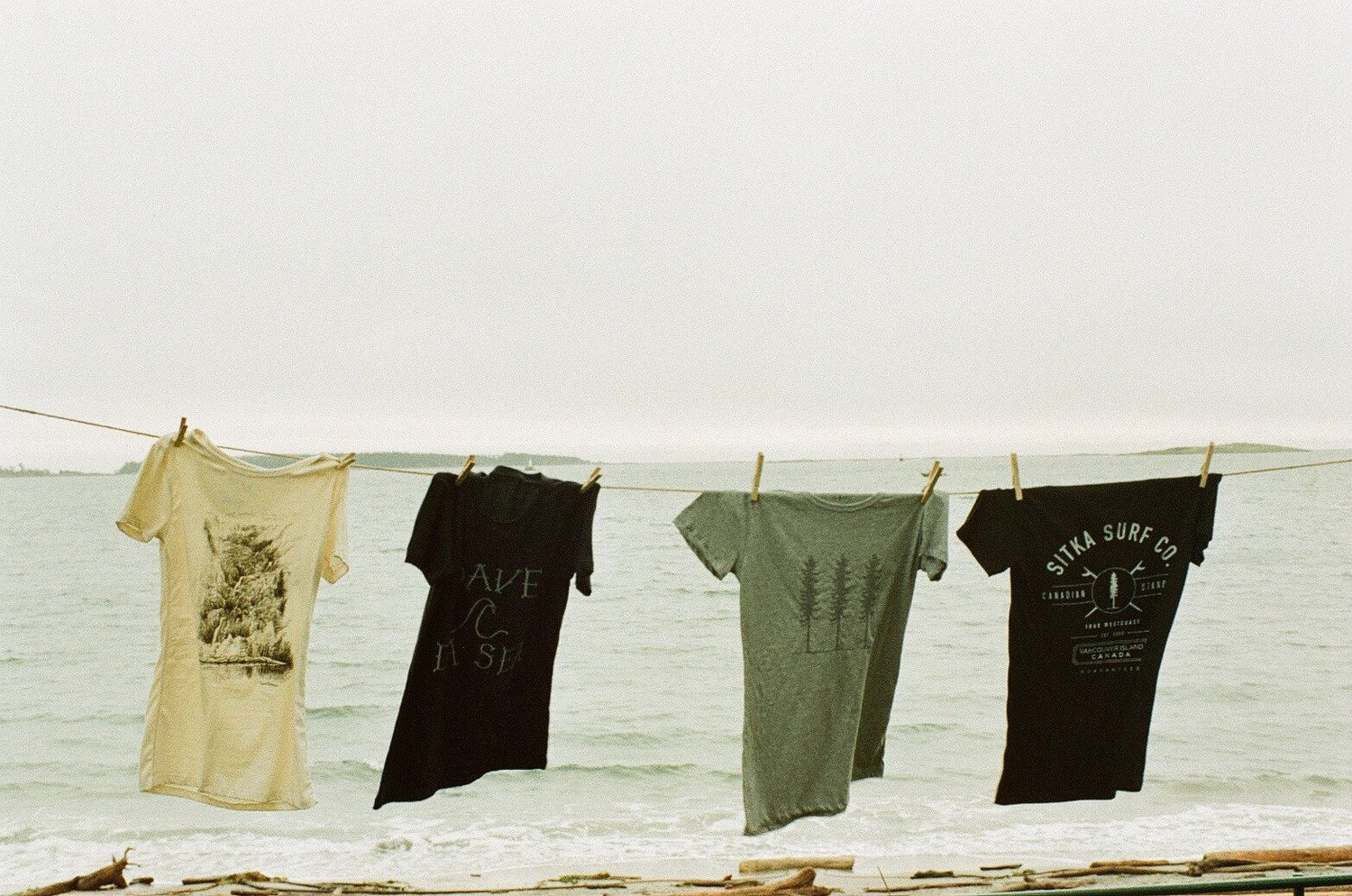There is a huge emphasis put on the amount of carbon output from the production of a t-shirt that so many people overlook the amount of energy that goes into maintaining that same shirt. Around 75 to 80 percent of our shirts carbon impact comes from the actual washing and drying portion of its lifecycle. It takes close to 20,000 litres of water to make a single t-shirt and a pair of jeans but it’s around 151 litres for a single load of laundry. The average person wears a shirt 2 – 3 times before washing, so over the course of a t-shirts lifetime the water usage and carbon effects add up.

Heating the wash water and running the dry cycle takes a massive amount of energy. On average, households do around 400 loads of laundry each year, which accounts to 51,103 litres of water. Therefore, there is huge potential in reducing energy and water use and in turn your environmental footprint by simply washing clothes less.
There are a few different ways to reduce your carbon footprint and increase the lifecycle of your clothing.
Is Your Shirt Really Dirty?
If you can avoid washing your clothes for no reason, you’ll avoid paying high-energy bills. The smell test is an effective way to determine whether or not your clothes need washing. Or try spot cleaning as a way of getting rid of stains.

In a recent study by The Conversation, 31 people were asked to wear the same pair of jeans at least 5 times a week for 3 months without washing. The goal of the study was to gauge the social reaction and to break down this household ritual to see how it would affect their lives. The results showed that the jeans weren’t socially challenging because they weren’t visibly dirty and they didn’t smell. The study demonstrates how arbitrary social standards lock us into routine consumption that can have a huge affect on the environment.
Eventually, you will need to wash your clothes so here are a few tips for reducing energy usage when the time comes:
1. Spot Clean First
Spot cleaning first is like rinsing your dishes before the dishwasher. There is a higher chance your clothes will come out cleaner the first time than if you let the washer do all the work.
2. Cold Cycle
Almost 90% of the energy consumed by a washing machine is due to heating the water. Cold water can also help protect your clothing as high heats may damage them.
3. Hang dry
Hang drying your clothes will save a lot of energy. Jeans are one item of clothing that especially benefits from being hung to dry. It takes the same amount of energy to dry-clean a pair of jeans as it does to heat a home for 387 hours.

Choose Your Fabrics Wisely
Choosing the right fabrics can not only help lengthen your clothing’s lifecycle but also reduce the amount of times you need to wash them. Knowing how to care for different fabrics is critical for increasing their longevity.
Wool
Wool is one of the most resilient and durable fabrics out there for a few reasons:
1. Stain Resistant
The thin waxy coating on wool fibres makes wool water resistant. This allows time for liquid spills to be wiped from the fabric before they can cause permanent staining.
2. Diminishes Body Odor
Wool reduces the opportunity for odors to develop because it quickly absorbs sweat and evaporates it into the air. Unlike synthetic fabrics, wool doesn’t retain odors and will freshen from just airing it out.
3. Long Lasting
Wool can be bent 20,000 times before breaking. By comparison, a cotton fibre will break after 3,000 times and silk after just 2,000. Don’t wash wool too frequently, because it can wear out and shorten its lifecycle. When you do need to wash your wool, put it on the delicate setting and never put it in the dryer otherwise some shrinkage may occur.

Cotton
Cotton is a soft, absorbent and breathable fibre.
1. Hand Wash or Delicate Setting
Hand washing will best protect your cotton clothing but when that isn’t an option a use the delicate cycle to reduce fibre breakage.
2. Cold Water
Cotton fabrics shrink very easily. By washing in cold water this can reduce the amount it shrinks and helps to maintain the shirts colour. The warmer the water the more likely the dye will bleed in the cotton fabrics.
3. Turn Your Clothes Inside Out
By turning your clothes inside out during washing, the outside design will be protected and reduce pilling.
4. Hang Dry Inside Out
Hang drying is an essential method for preventing any further shrinking of the fabric. Always keep your clothes turned inside out when hang drying outside to prevent the sun from fading the fabric.
The Monetary Benefits
Washing your clothing less has many benefits from helping the environment to saving your bank account. You will spend less money on your energy bill by reducing the number of laundry loads, as well as helping to protect the environment and reduce water usage.
Your clothes will last longer, which means you don’t need to be constantly replacing faded or shrunk clothing. By purchasing high quality clothes and taking the proper steps to care for them, you will save money long-term. Purchasing low quality clothing frequently may seem like you’re saving money but the long-term costs of frequently replacing those items adds up. Lastly at the end of your clothing’s life, they will be easier to consign and keep out of landfills.



